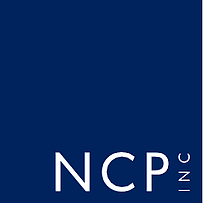In like a lion, out like a lamb?
By: Eric Lohmeier, CFA
March of 2023 ushered in a Category 5 hurricane in the US commercial banking landscape with the seemingly ‘overnight’ failures of Silicon Valley Bank and Signature Bank, followed in early May by the failure of First Republic. These institutions collectively held over $500B in assets, representing two of the largest bank failures in US history. The US banking regulatory bodies (OCC, Federal Reserve, and FDIC) made a resounding and timely pivot to prevent any real possibility of a run on the entire banking system. The decision to cover all potential losses to depositors over the $250,000 limit, and institute the Bank Term Funding Program, was largely successful in mitigating further disaster (which effectively included all commercial banks not designated as Too Big To Fail); however, there are still dark clouds on the horizon.
At the core of the recent bank failures were asset-liability mismatches (in the worst cases, severe mismatches), which at some level are inherent to the entire banking system. Customer deposits make up a majority of a typical bank’s funding, and the largest source of deposits reside in demand deposits – most of us know these as checking accounts, whether business or personal. For most of the last 15 years, individuals and businesses alike had very little reason to pay attention to their cash balances with regards to any kind of interest return, as short-term rates as evidenced by the Fed Funds rate hovered near zero. The convenience of keeping these demand deposits readily available in our bank accounts overrode the benefit of earning a measly few basis-points of interest in a money market account or T-Bills.
When the Fed rate hikes began in earnest in mid-2022 from a zero-bound Fed Funds rate to today’s upper-bound of 5.5%, things drastically changed. By January of 2023, the Fed Funds rate stood at 4.75% and both individuals and corporations woke up to the fact that they were effectively subsidizing banks to the tune of almost $50,000 annually for every $1 million of deposits. In response, over the last 6 months essentially any individual or business in their right mind either demanded a competitive rate on their cash deposits at their bank or took any non-necessary, near-term funds and parked these in T-Bills or money market funds.
When deposits exited the banking system for higher yielding alternatives (e.g., T-Bills), those same banks were forced to sell liquid assets at a significant loss of principal in the case of long duration assets, because their ability to hold long-duration assets in the first place was tied explicitly to their ability to hold on to low or no-cost deposits. Duration is a financial concept similar but distinct from maturity – it is the average time it takes to receive all the cash flow of a bond, weighted by present value; the longer an asset’s duration, the higher its sensitivity to any changes in short-term rates. Its relevance in this case was that because of the low interest rate environment, banks had committed to long-term loans with individuals, businesses and various government entities at rates far less than where the reference rate (Fed Funds) had trended in a span of less than 1 year. When short-duration deposits began demanding returns again, banks were stuck because they had already invested those funds in long-duration assets.
From a societal perspective, these failures should garner zero sympathy for the management teams of these institutions – one of the first lessons in Finance 101 classes is managing asset-liability durations. These failures, whether due to inexplicable ignorance or gross negligence, may have juiced quarterly earnings and C-suite bonuses in the short term, but in at least the medium term have made most banks today essentially un-investible. The federal government bailout via the Bank Term Funding Program provided a necessary liquidity backstop for the banking sector, but in no way provided an earnings bailout. With an average system duration of approximately 5 years, this means the banks’ capital buffer will be subsidizing the low interest assets (i.e., loans they made and bonds they hold) because they are now stranded in a world where it is necessary to pay up for deposits.
Simply stated, if asset portfolio yields average 4% (a fair estimate, as today they range from 2% to 6%) the cost of capital for new money deposits is now over 5%. This constitutes a “negative spread” of 100 bps (conservatively) and this is before the bank’s overhead is taken into account! Fee income sources from other bank service lines and maturing low-rate loans re-financed at higher rates will, over time, provide a salve to this calamity, but for most institutions there will be a period measured in years where the drip, drip, drip of negative spreads will have a deleterious effect on their earnings and capital. We are in a “Walking Dead” zone as it pertains to the ability of most lending institutions to provide a positive return on equity. As a result, dividend policies are highly likely due for consideration at most bank boards – and they are not going up. The system is going to be rehabilitating for some years forward, and returning to championship form is like hoping the Nebraska Cornhuskers play for a national title in the next year or two.
Sad but true – for now most of us are better off hiding out in those juicy fixed-income yields rather than chasing rallies in bank equities!











